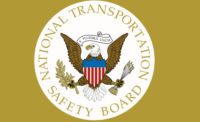The National Transportation Safety Board (NTSB) now knows what was behind a fatal 2015 train collision near Roswell, New Mexico, but it doesn’t know why. An NTSB investigation has determined that a conductor’s failure to properly line a switch is the probable cause for the April 28 collision of two Southwestern Railroad freight trains. The striking train crew did not perceive the misaligned switch in non-signaled territory and so did not stop the train before reaching it contributed to the collision.
Rolling papers in the locomotive cab
Post-accident toxicological testing on the engineer of the striking train – who died in the incident - identified significant levels of tetrahydrocannabinol. These results, and the presence of rolling papers and pipes in the locomotive cab suggest the engineer smoked marijuana between 30 minutes and five hours before the accident, and, because the engineer had been on duty for almost 10 hours, he likely used marijuana while on duty and likely was under its influence while operating the train. It could not, however, be determined if the THC in the engineer’s system affected his response to the misaligned switch.
The conductor’s results were positive for medications administered during his medical care and for oxycodone and its metabolite, oxymorphone, however the results indicate the conductor most likely was not impaired at the time of the accident. The lack of inward-facing cameras in the locomotive prevented the NTSB from determining the actions of the crewmembers while operating the train, or even which crewmember was operating the train just prior to the accident.
The conductor was seriously injured in the collision that derailed 11 locomotives and three empty hopper cars and caused about $2 million in property damage.
How it happened
The accident happened when a westbound Southwestern Railroad train traveled through a switch left in the reverse position at the east end of the Chisum siding, just south of Roswell, and collided with Southwestern Railroad’s Roswell Local, which was standing in the siding. The conductor of the standing Roswell Local train told a manager that he failed to line the switch for normal main track movement at the Chisum siding.
Based on the results of its investigation the NTSB issued one new safety recommendation to the Federal Railroad Administration to develop a device or technique to eliminate the possibility of employees failing to perform critical tasks such as lining a switch, lining a derail, or ensuring cars are in the clear.
“A train is an enormous machine that can injure or kill people, damage property or harm the environment,” said NTSB Chairman Robert Sumwalt. “Given the stakes, image and audio recorders belong in train cabs. Yes, they help investigators but they also can help railroads ensure safer operations.”
The NTSB’s report reiterates three recommendations to the FRA including one requiring the installation of technology to warn trains of incorrectly lined main track switches and two addressing the installation of recorders to capture the actions of the crew.
FRA data shows the positive rate for post-accident drug testing declined in 2017 to 1.2 percent from 4.2 percent in 2016.
The abstract of the NTSB’s final report, that includes findings, probable cause and recommendations, is available online at: https://go.usa.gov/xQTrT.



